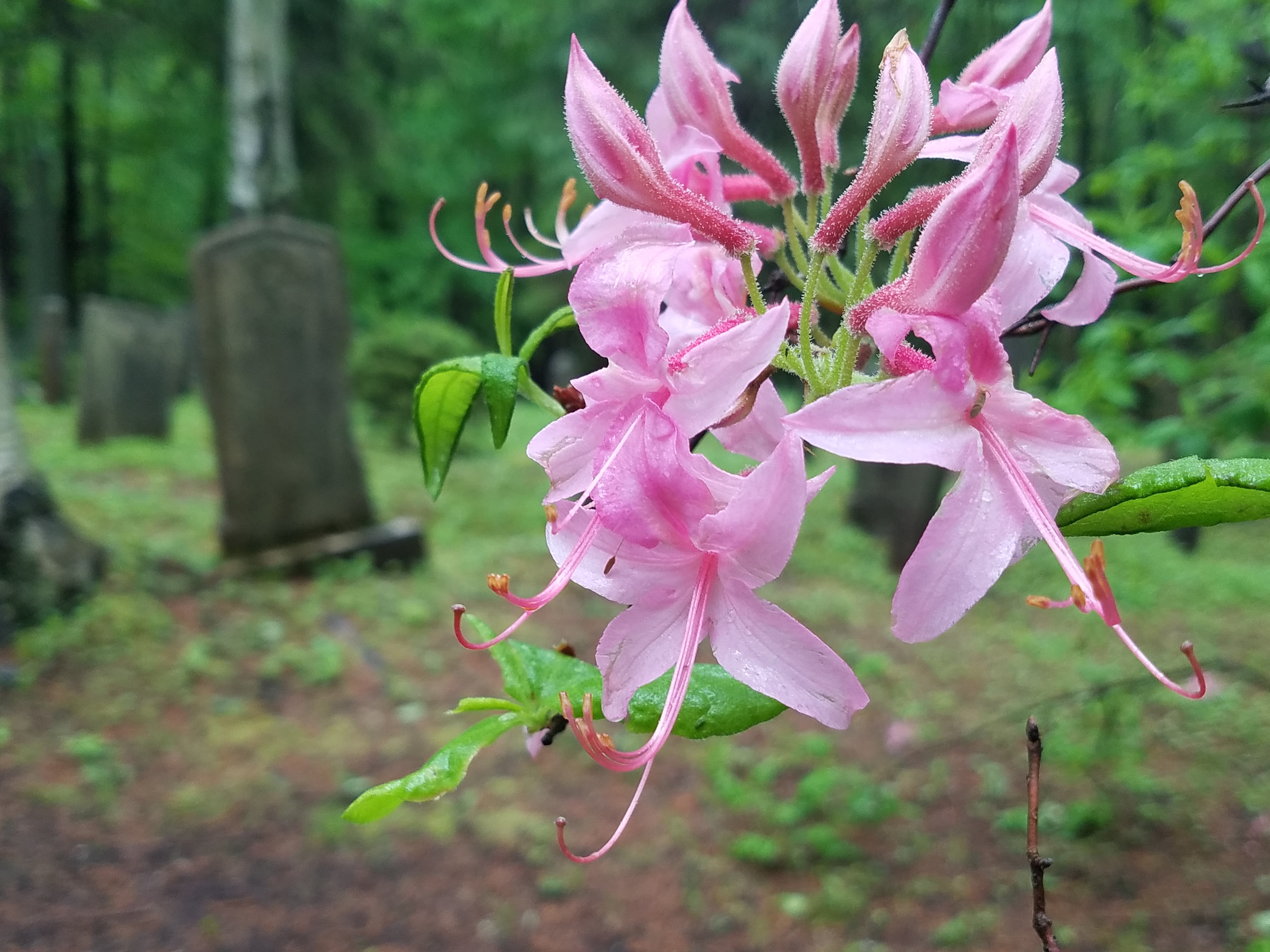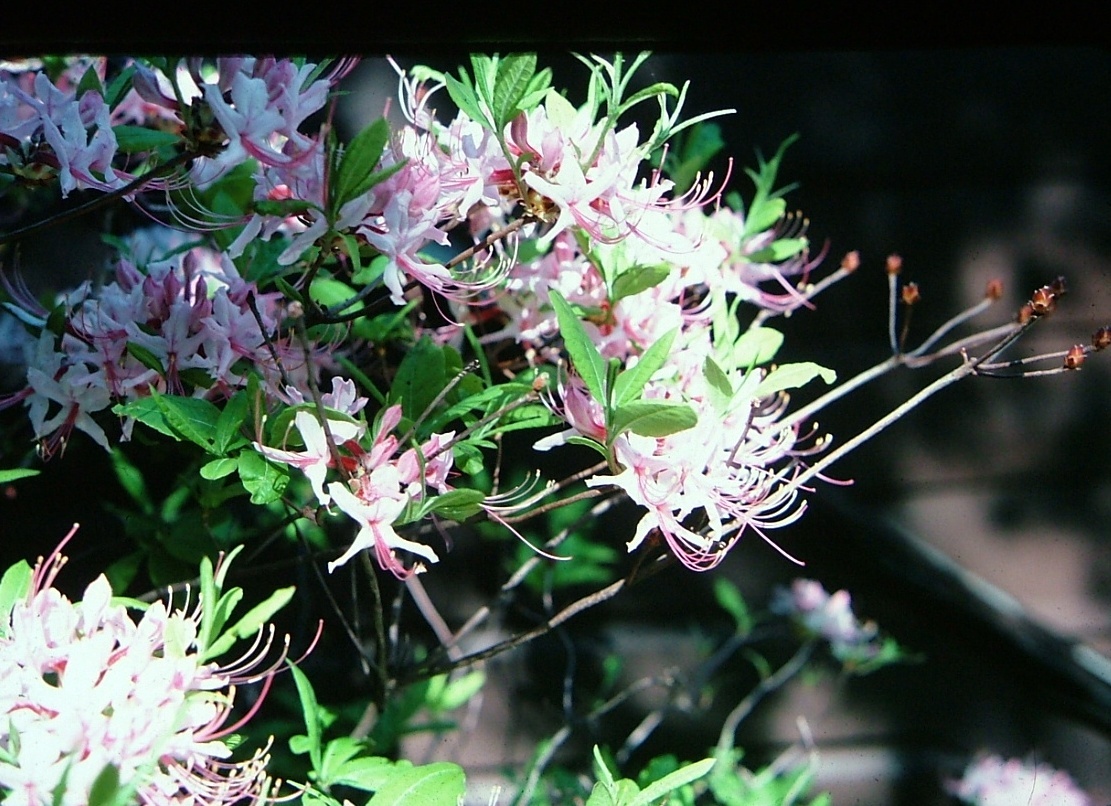Pinkster azalea is a native understory plant found in moist woods and swamps of the northeastern United States. Rhododendron periclymenoides is the scientific name most commonly associated with this plant. The R. periclymendoides range in New York is primarily south of Kingston and includes Long Island and Staten Island. The pinksters of our region of upstate New York are more often the species Rhododendron prinophyllum. This plant is known by the common name early azalea. Locally, this is what we call our pinkster. This plant is more cold-hardy than the periclymendoides species, and has pinker, more fragrant flowers.
My curiosity about plant names and the local variations of names caused me to seek out the meaning of the common name of the “pinkster” azalea.
Researching the word “pinkster” revealed connections to Dutch culture, religion, and slave history. “Pinkster” derives from “Pinksteren,” the Dutch word for Pentecost. Pentecost occurs each year, a holy day identified with the beginnings of the Christian church.
Historically, Dutch families celebrated Pentecost, and over time this celebration became known as the Pinkster Festival. During this holiday period, Dutch slave owners provided their slaves three to four days of freedom to celebrate with family and friends. Albany became a primary site in New York State for the Pinkster Festival. In fact, the location of the capital building in Albany was known as Pinkster Hill. Pinkster Festival evolved away from a Dutch celebration and became a major celebration of enslaved and free African-Americans. Pinkster Festival is now regarded as an important part of their cultural heritage. The Pinkster festival, celebrated in Albany from 1625 to 1811, was one of the largest celebrations in America. In 1811, the Albany Common Council banned Pinkster celebrations over concerns that gatherings of enslaved people and free slaves might lead to rebellion.
Schoharie County has a locally shared story of Pinkster Festival. Local lore has it that a celebration took place each spring on a summit known as Barruck Zourie in the town of Carlisle. This summit was covered with pinkster azaleas. The branches were gathered on the top of Barruck Zourie for distribution in the community. Picnics, baseball games, and family gatherings were part of the celebration. The Pinksters were probably early azalea (R. prinophyllum). The celebration of spring flowers and family seem to have been the essence of the event. It is a little-known part of Colonial American history that today is being revived. Festivals are taking place annually at Phillipsburg Manor, Schyler Manor, and numerous locations in the Hudson Valley.
The pinkster endures as a lovely aromatic shrub, and its association with Pentecost and its deep meaning in the history of enslaved and free Black peoples make it a fascinating native well worth planting in the Upstate New York garden.
For more information, visit these sites:
Pinkster at Phillipsburg Manor: https://www.youtube.com/watch?v=0qb6RpYrWrY
How the Dutch Holiday “Pinkster” Became an African-American Cultural Celebration:
https://nystateparks.blog/2024/02/08/how-dutch-holiday-pinkster-became-an-african-american-cultural-celebration/
Rhododendron periclymenoides: https://en.wikipedia.org/wiki/Rhododendron_periclymenoides
Brooklyn Botanic Garden: Plant Spotlight: Pinkster: https://www.bbg.org/article/profile_pinkster_azalea_rhododendron_periclymenoides
Missouri Botanic Garden: Rhododendron prinophyllum:
https://www.missouribotanicalgarden.org/plantfinder/PlantFinderDetails.aspx?taxonid=279989


